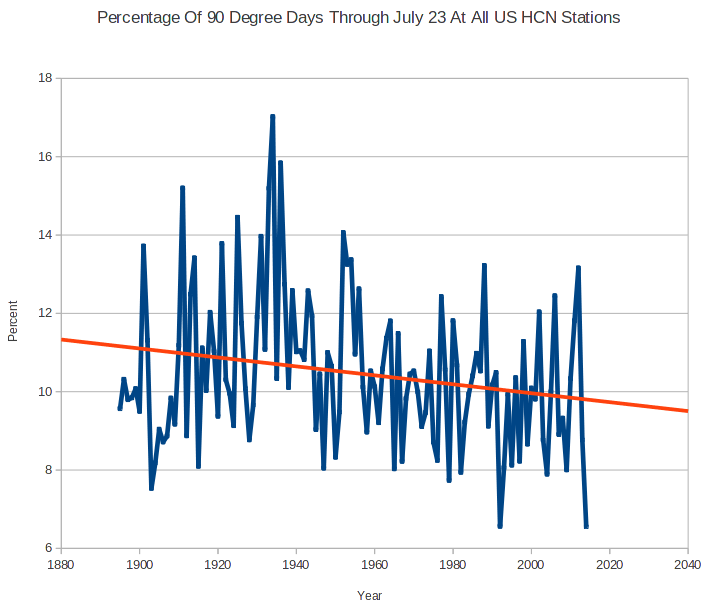
The latest data averaged from all temperature stations of the Historical Climatology Network shows that this summer has thus far broken the record as the coldest.
Another cold summer with a low frequency of days with recorded temperatures above 90 degrees came back in 1992, the year the atmosphere was coated with ash from the eruption of Mt. Pinatubo. However, going back to the 1880s, only one other summer in the early 1900s rivaled the 1992 and 2014 temperature readings.
According to the data, the average number of 90-degree days has been steadily declining since the 1880s, as well.
This HCN summer record comes on the heels of record cold temperatures in July that haven't been seen since record keeping began in the 1880s. A strong cold front beginning on July 14 swept across the country, bringing below-average temperatures for much of the central and eastern U.S.
Comment: From Weather.com:
On the heels of one July polar invasion, yet another major cooldown is here to wrap up July.
A large southward dip in the jet stream, also known as a trough, pumped in cool air from Canada into much of the central and eastern U.S. High temperatures were more than 20 degrees below average for this time of year in some areas, and most of the region saw at least one or two days with temperatures 5 to 10 degrees below average -- a noticeable difference at a time of year when many of us spend the most time outdoors.
What was notable about this cooldown is not just the fact that it took place in mid-summer, but that it resulted from a pattern that seemed to be frequently repeating.
The same jet stream pattern this week showed up not only in mid-July, but during much of the January-June time frame as well. As a result, much of the country east of the Rockies was much cooler than average for the first half of 2014, while the West was unusually warm.



Reader Comments
to our Newsletter